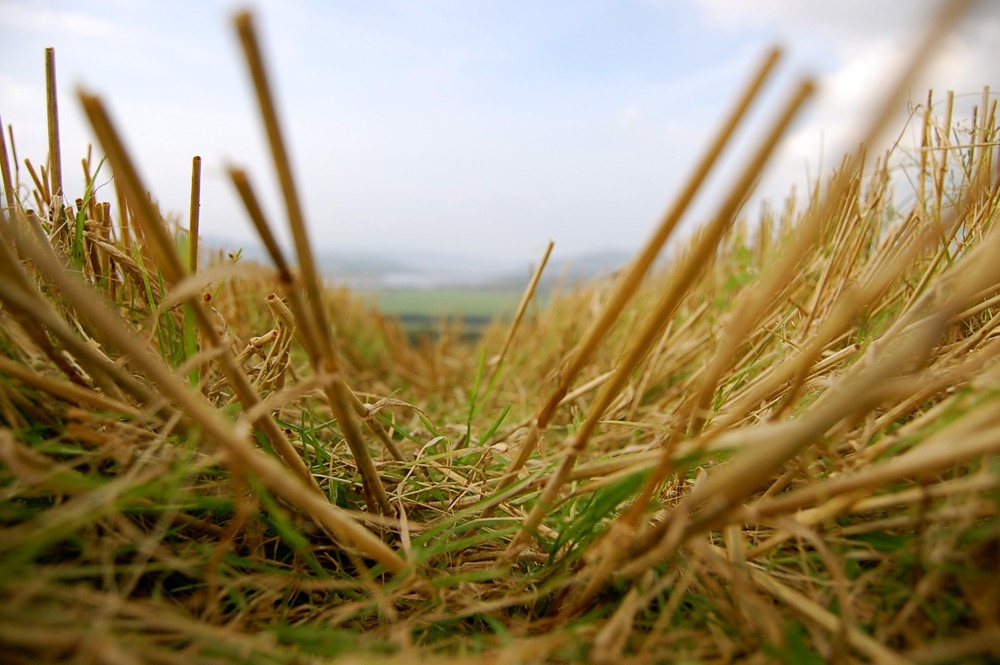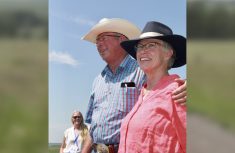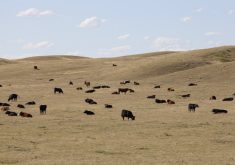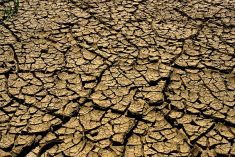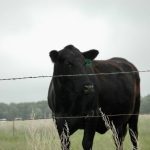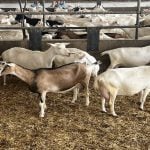Ranchers and beef farmers who have sourced straw for their cows may now be looking for ways to boost the ration quality.
Ammoniation is one option, but it’s not easily done.
Read Also

Alberta ranch family outlasts droughts
Over the years, the Lehr family has learned a thing or two about managing the ranch through dry years
Applying anhydrous ammonia is a “tried-and-true technique” for improving poor-quality forages, says Dr. John McKinnon, speaking during a Beef Research Council of Canada webinar on managing through drought.
“The advantages of ammoniation is basically it’ll take the crude protein content of straw from anywhere around four, 4.5 per cent and virtually double that,” says McKinnon, a consulting beef nutritionist and professor emeritus at the University of Saskatchewan.
“You have to remember that it’s not actual protein that it’s doubling, but it’s ammonia that’s being incorporated into the plant structure and a ruminant animal can use that ammonia to basically synthesize microbial protein. So, it is a real benefit that way.”
Ammoniation will also increase the total digestible nutrients (TDN), or energy content, of straw, McKinnon adds. It can potentially boost TDN from 40 or 45 per cent to nearly 50 per cent, depending on the straw type. Cattle will be able to eat more straw with less risk of impaction, he adds.
A Manitoba Agriculture factsheet also notes that ammoniation allows producers to harvest forages at higher moisture levels. Bacteria and molds are destroyed by the process, preventing overheating.
But applying anhydrous ammonia to straw bales is not an easy task. Producers must stack the bales in a fashion that enables them to cover and tightly seal the straw with plastic, McKinnon says. Manitoba Agriculture recommends six mil black, polyethylene plastic for covering bales. If using two sheets of plastic, producers should avoid covering the black sheet with clear plastic, as the plastic will melt due to a greenhouse effect.
McKinnon says there also seems to be resistance to getting involved with the ammoniation process among the companies that supply anhydrous. “I’ve heard that from a number of different sources now.”
However, producers opting for ammoniation should be very careful and think about how to manage the risk. If a person is exposed to anhydrous ammonia, they can suffer burns to skin, eye damage and lung damage. Damage can be long-term, and in severe cases, it can kill.
“It’s potentially a dangerous issue. You want to make sure that you’ve got the right equipment, goggles, gloves, etc.. so that if an accident does happen, you’re going to be safe, because it can be a very nasty product to deal with.”
Manitoba Agriculture also recommends keeping an easily opened container of water close by to flush ammonia from the skin or face in case of a spill. Stand back from the stack while it’s being ammoniated in case of a leak.
Despite those cautions, ammoniation may be worth considering.
“Certainly it’s an opportunity that a lot of people have been thinking about and has been a tried-and-true method of increasing the nutrient value of straw.”


